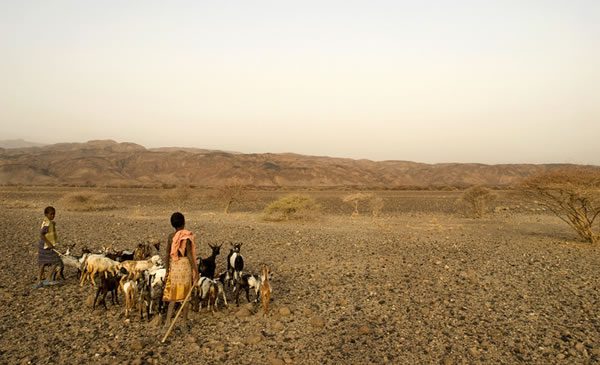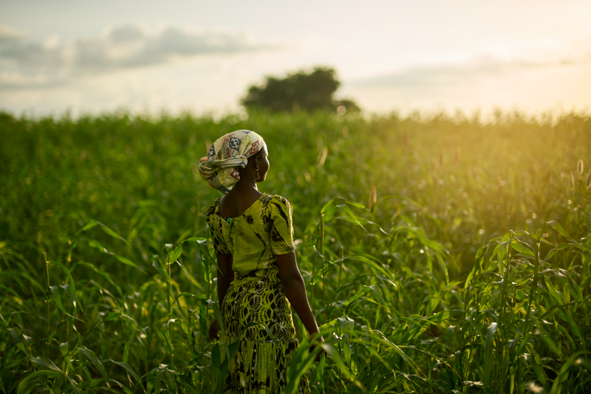New figures from the Food and Agricultural Organisation (FAO) for January 2011 show that world prices are at their highest level since the organisation started measuring them in 1990 – topping prices seen in June 2008 at the height of the last global food crisis. Why is it happening and what can we do about it?
Major food importing countries, especially in Northern Africa where harvests have been poor, are already feeling the impact as are countries as far a field as Tajikistan, Guatemala and Bangladesh. Elsewhere good harvests are helping to offset the affect of high global prices – but if prices remain high and volatile it will only be a matter of months before they too feel see the impact on the price of food in the market place. We are not experiencing a major crisis on the scale of 2007-2008 yet but there are serious reasons to be alarmed. Millions of people’s lives and livelihoods are at risk across the developing world.
How does this compare to the last major global food crisis in 2007/8?
The current situation has many similarities to the crisis in 2007-8 when the number of people living in hunger topped 1 billion for the first time. However there are crucial differences:
- Global cereal stocks were low in 2007-8 but they are much higher now
- Price rises are not yet global – in parts of Africa cereal prices have stabilised or gone down as a result of good harvests.
- A major factor driving food prices up in 2007-8 was the large numbers of export bans imposed by major food producing countries which reduced the amount of food in the global market and gave rise to panic buying and speculation. This has yet happen to the same extent but there are increasingly worrying signals that it might.
- Prices are rising across all food stuffs but not equally. Currently staple foods, particularly cereals but also oils and dairy, are at a lower price than in the peak of 2007-8 but are getting closer rapidly. Meat and especially sugar prices are much higher.
However all of these factors are subject to change. Without government action the situation could easily tip over into a major crisis on the scale of 2007-8 or worse.
What’s likely to happen next?
Food prices are likely to continue to increase – at least until the middle of this year – unless governments intervene. Prices could then start to decrease of their own accord if harvests in the main food exporting or most populous countries are good. If harvests are poor then prices may continue to rise. The longer prices continue to increase, the greater the risk that price hikes will be transmitted to a large number of poor countries and the greater the risk of a major food crisis. Volatility of food prices will continue to be a problem, even in times of good harvest, unless governments intervene to regulate markets and ensure food producers are better equipped to cope with climate shocks.
What causes high and volatile food prices?
The cause of the price increases and volatility is complex and there is considerable debate about the relative importance of different factors.
- Reduced production in some countries due to bad weather – particularly wheat lost in Russia, the Ukraine and Kazakhstan due to extreme heat and wildfires in the summer of 2010.
- Increase of oil prices directly affecting the cost of agricultural inputs – particularly fertiliser and transportation.
- Biofuels production which takes land away from food production
- Export bans and restrictions – Russia’s export ban on wheat after droughts and wild fires decimated their wheat crops in the summer of 2010 is still in place
- Panic buying or hoarding occurring due to export restrictions and fears that prices will continue to increase
- Financial factors such as the depreciation of the dollar and low interest rates
- Speculation on the commodity markets
- Increasing demand for food due to a growing population and rising per capita meat and dairy consumption in emerging economies
- Productivity decline due to lack of investment in agriculture, land degradation, natural resources depletion and climate change.
Who are the winners and who are losers from high and volatile prices?
Big food trading companies have reported increased profits; supermarkets, seed and fertilizer companies are also doing well. Some big agribusinesses, which operate along the supply chain, and have a strong position in markets, are well placed to reap the benefits of higher prices as are big institutional investors which are involved in speculation on food prices.
Poor people in developing countries and poor communities in the developed world who can spend up to 80 percent of their income on food will be the big losers. Any increase in food prices will force them to cut back on their consumption, reduce their spending on other basic needs such as education and health, sell vital assets such as livestock or land, or borrow money they can ill afford to repay. Those already living on the edge are particularly vulnerable including the landless, slum dwellers and farm workers. Women and children are likely to suffer most as men’s rations tend to be prioritised in many households.
While high food prices could represent an opportunity for those who make a living from agriculture many poor farmers are unable to take advantage of price increases because of limited access to land, water and essential inputs like fertilisers, lack of market information or the power to negotiate a fair price for their produce, and a lack of storage facilities or infrastructure which would enable them to sell their produce when the price is right. In addition many poor producers are net buyers of food so will struggle to buy food as the price increases.
What needs to happen?
Oxfam is calling for the Committee on Food Security, the global body responsible for tackling hunger, to establish a task force of government ministers from rich and poor countries and develop an emergency response plan by June.
This plan must act to share information on food stocks, coordinate trade policies and regulate food commodity markets. In the longer term it must address the underlying causes of food price volatility including the neglect of poor farmers and a lack of social safety nets for poor consumers.
G20 Finance Ministers, who meet in Paris in late February, must ensure commodity markets are more transparent and do not undermine the right to food, they must increase investment in small holder agriculture and ensure that poor countries get the support they need to cope with rising food import bills.
How you can help
Make a donation to our Africa Food Crisis Appeal


 Doris*, daughter, 5; Pamila*, 2. Christina grows maize and she was shown how to make compost as part of the CRAFS (Climate Resilient Agriculture and Food Systems) programme.
Doris*, daughter, 5; Pamila*, 2. Christina grows maize and she was shown how to make compost as part of the CRAFS (Climate Resilient Agriculture and Food Systems) programme.
